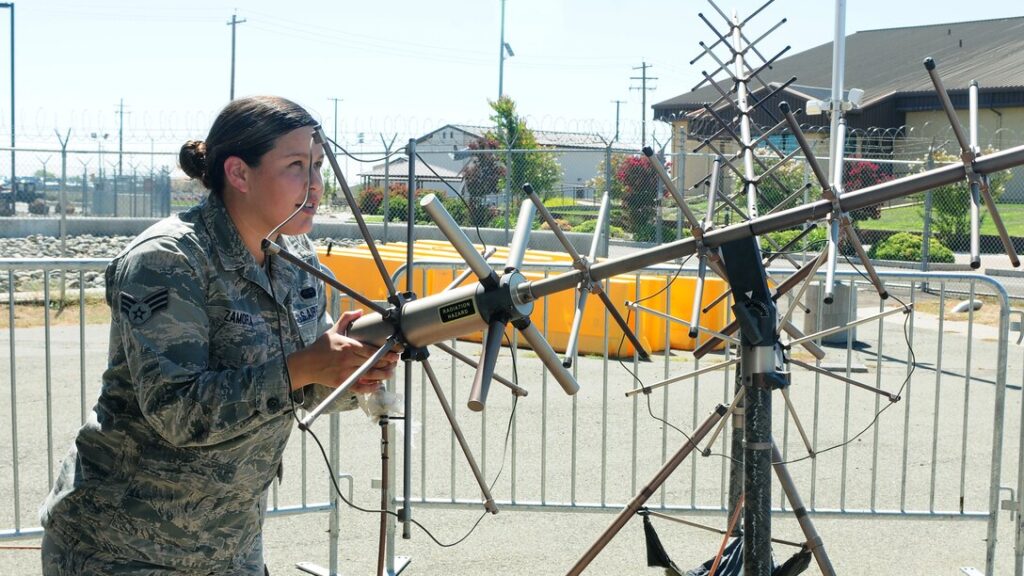
A radio frequency technician for the Global Hawk aligns an ultra high frequency satellite communication antenna at Beale AFB. (Air Force/Allen Pollard)
SATELLITE 2022: The Defense Department is wrapping up a study on how to streamline and better protect its vast array of often incompatible ground terminals for satellite communications, with an eye to launching some changes next year, DoD’s SATCOM chief said today.
Grappling with the military’s myriad sets of SATCOM ground terminals in order to allow machine-speed communications between sensors and shooters on land, at sea, and in the air, space and cyberspace is a critical element in making the Pentagon’s high-priority Joint All Domain Command and Control (JADC2) strategy work, Mike Dean, who works for the DoD Chief Information Officer (CIO), told the SATELLITE 2022 conference here today.
“So, a lot of people, when they think of space-based capabilities, they always forget the ground segment,” he said.
“We’ve spent the last almost two years doing a kind of thorough study. It was meant to be a lot shorter, but then COVID slowed us down,” Dean said. “But we looked at our DoD ground access points — you know, how we anchor our capacity in what we call the DoD Information Network.”
The DoD Information Network is the sprawling number of computer-based networking systems the Pentagon uses for all of its various operations. It is defined as a “globally interconnected, end-to-end set of information capabilities, and associated processes for collecting, processing, storing, disseminating, and managing information on-demand to warfighters, policy makers, and support personnel, including owned and leased communications and computing systems and services, software (including applications), data, security services, other associated services, and national security systems.”
The study found that “with some modest investments and repositioning some of our ground segments, we can build a little bit more optimization and resiliency,” Dean said. “So, we’re looking probably in the next next year to lay out some of those initiatives.”
The other key finding of the study was that “virtualization and digitization … is pretty key” to rationalizing the Pentagon’s SATCOM ground segment, Dean said. This is because the Pentagon uses a “hybrid, heterogeneous space segment of multiple orbits, which have all these different paths to traverse our data.”
This, in turn, results in “having stacks of equipment inside your gateways to try to swap and to go back and forth between networks,” something that just becomes too “cumbersome” for operators, he explained. “So if you want to move data around at machine speeds, you got to digitize and virtualize to some degree.”
The need to modernize and rationalize the SATCOM ground segment also is one of the drivers behind the Space Force’s Satellite Communications Enterprise Management and Control (SATCOM EMC) program. The overarching aim of that effort is to meld military, commercial, and coalition satellite communications capabilities found in orbit (LEO), medium-Earth-orbit (MEO), and geosynchronous orbit (GEO) to create a seamless, real-time communications network to underpin JADC2.
“We have a pretty good idea where we need to strengthen our network transport, and we’re obviously looking forward to integrating a lot of these new commercial space opportunities and transport capabilities so that we can increase the pipes” for information flow, he Dean said.
He explained that while the Space Development Agency is working on a data Transport Layer of satellites in LEO, JADC2 will require that larger network that utilizes all communications satellites in all orbits.






















